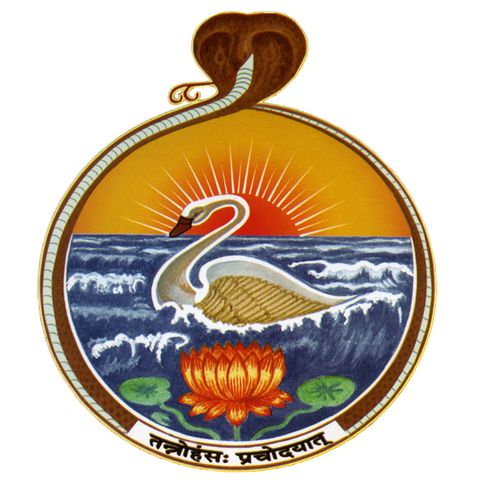Vivekachudamani 10 - Subtle Body and Three States of Consciousness | Swami Tattwamayananda

Download and listen anywhere
Download your favorite episodes and enjoy them, wherever you are! Sign up or log in now to access offline listening.
Description
Verses 96-99 -Reference is provided to the seven questions posed by the disciple in verse 49. One of the questions posed “what is anatman?” is discussed further in the class....
show more-Reference is provided to the seven questions posed by the disciple in verse 49. One of the questions posed “what is anatman?” is discussed further in the class.
-Various levels of reality are discussed. Anatman is that which is unreal or relative. Things in the empirical world have name and form – they are not Absolutely Real, but not totally unreal. In Vedanta, for a thing to be real, it must exist in the past, present and future. Only Absolute Reality meets this requirement.
-96th verse: Sukshma-Sharira has eight units: (1) Five organs of perception (2) Five organs of action (3) Five pranas (4) Five subtle elements (5) Antahkarana – mana, buddhi, chitta, ahamkara (6) Avidya (7) Kama and (8) Karma.
-Vritti is the residual effect left in mental system from any thought, deed or speech. Vritti => Samskara => Vasana => Karma form a continuous cycle.
-97th verse: It is this subtle body that provides indication that there is something beyond the body. Subtle body is the one that goes through all experiences, even from past life. Example of a child exhibiting musical talent is provided. Only tendencies/impressions travel from life to life.
-Atman is all-pervading. When it is caged within a jeeva, it is referred to as Jeevatma.
-Concept of subtle body only applies to a person who is not enlightened. That is why avidya is included in the eight units of subtle body. Avidya causes us to misinterpret ourselves in many wrong ways as to who we really are. Example of rope illusion is provided.
-Everything is pervaded by Atman. However, only living beings have antahkarana, which acts as a reflecting medium. When the mind is pure, the Atman manifests with greater effulgence. Good actions re-energize latent good samskaras.
-Swami Vivekananda: “The difference between an amoeba and Buddha is one of degrees, not of kind.”
-“We are all Brahman” – this is only a concept in the beginning. The gap between concept and experience disappears through shravanam, mananam and nidhidhyasanam.
-Images and photos are symbols, not God. When we worship, we invoke the all-pervading Atman to be present in the image or photo.
-98-99 verse: A way of understanding supreme reality through three states of consciousness: waking, dream and deep sleep states. Waking and dream state differ in gross/subtle dimension and space and time dimensions.
-Waking state: Experienced with mind and senses of perception/action. All experiences are in gross state and retained in chittam.
-Dream state: Based on experiences from waking state, but re-arranged. All experiences are at sukshma-level, and based on ideas.
-Deep sleep state: While one does not experience duality in deep sleep, they do not transcend duality. During deep sleep only chitta-vritti is active. Recollection happens when one wakes up and chitta-vritti associates with aham-vritti.
-Turiya exists as the one reality and witness in all three states: waking, dream and deep sleep state. A witness has to meet two requirements: (1) be aware and (2) not involved.
-Samadhi and deep sleep state are not identical. There is full awareness in samadhi, but not in deep sleep state. To transcend duality, one needs awareness.
Information
| Author | Vedanta Society, San Francisco |
| Organization | Vedanta Society, San Francisco |
| Website | - |
| Tags |
Copyright 2024 - Spreaker Inc. an iHeartMedia Company

Comments